Abstract
Vasodilating antihypertensive drugs induce hypotension with reflex tachycardia, renin release, and fluid and electrolyte retention. Propranolol can impair this renin release. The studies described here were designed to determine the hemodynamic role of vasodilatory drug-induced renin release and inhibition thereof by propranolol in two animals models, the unanesthetized, normotensive and the unanesthetized, genetically hypertensive rat. In studies with normotensive rats, propranolol impaired renin release and tachycardia resulting from hydralazine and minoxidil and potentiated their hypotensive action. Two additional interventions against the renin-angiotensin system were used in evaluating the mechanism of this potentiation. One was removal of the renin source by nephrectomy, and the second was blockade of angiotensin's vasoconstrictor action using a selective angiotensin antagonist, saralasin (1-Sar-8-Ala-angiotensin II (previously known as P113)).. Both interventions potentiated vasocilatory drug hypotension, as did propranolol, but did not prevent reflex tachycardia. When combined with saralasin propranolol did not add to protentiation by this peptide. A similar pattern of blood pressure decrement and potentiation was seen in genetically hypertensive rats when propranolol or saralasin treatment preceded hydralazine. Propranolol was demonstrated to block hydralazine-induced increases in serum renin activity in genetically hypertensive rats. We conclude that hypotensive potentiation of vasocilating drugs by propranolol in these animal models is mediated to a large extent by impairment of renin release. Persistence of hypotensive tachycardia after nephrectomy and after saralasin in normotensive rats suggests the irrelevance of angiotensin's central nervous system stimulation to this cardiac effect. Clinical studies are underway to quantify the potential importance of this beneficial drug interaction in man.
Full text
PDF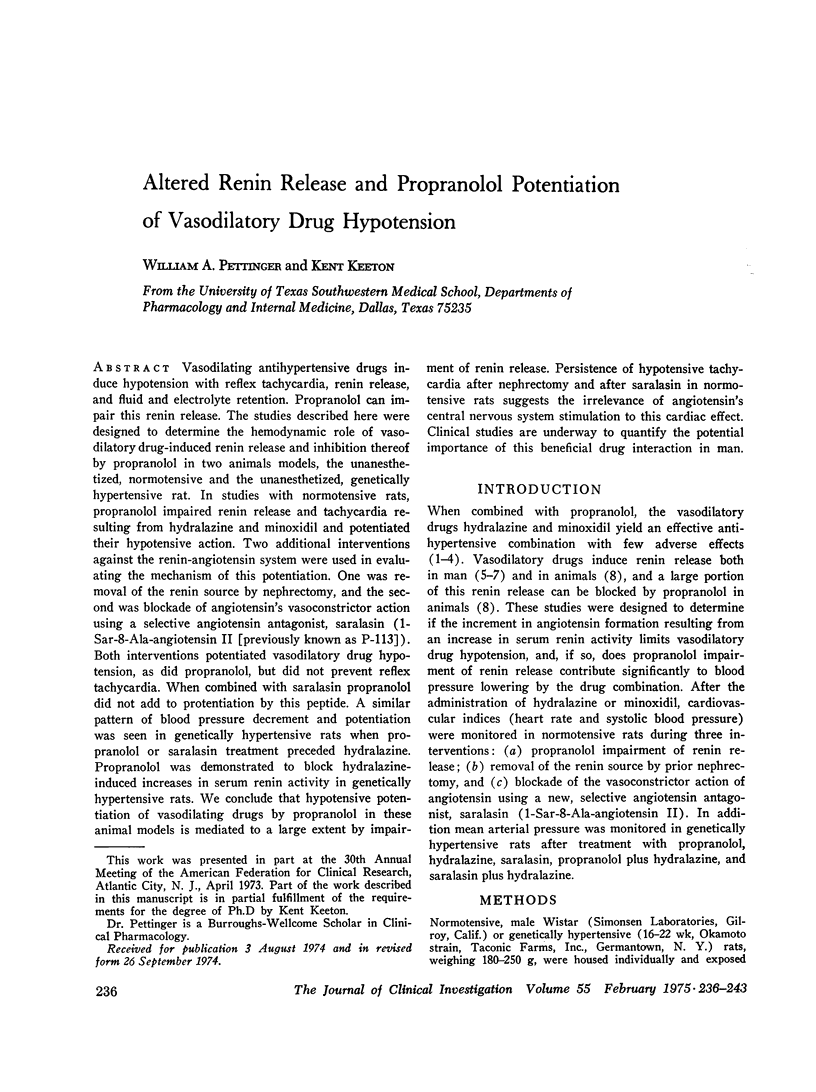
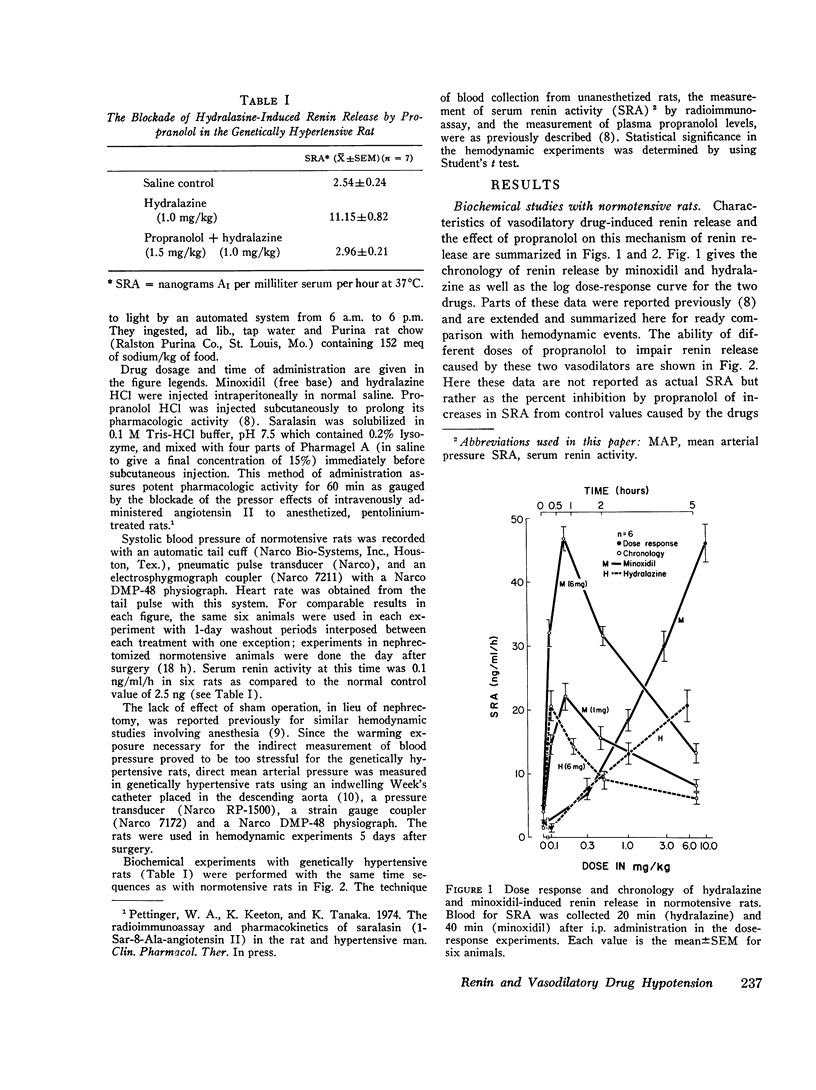
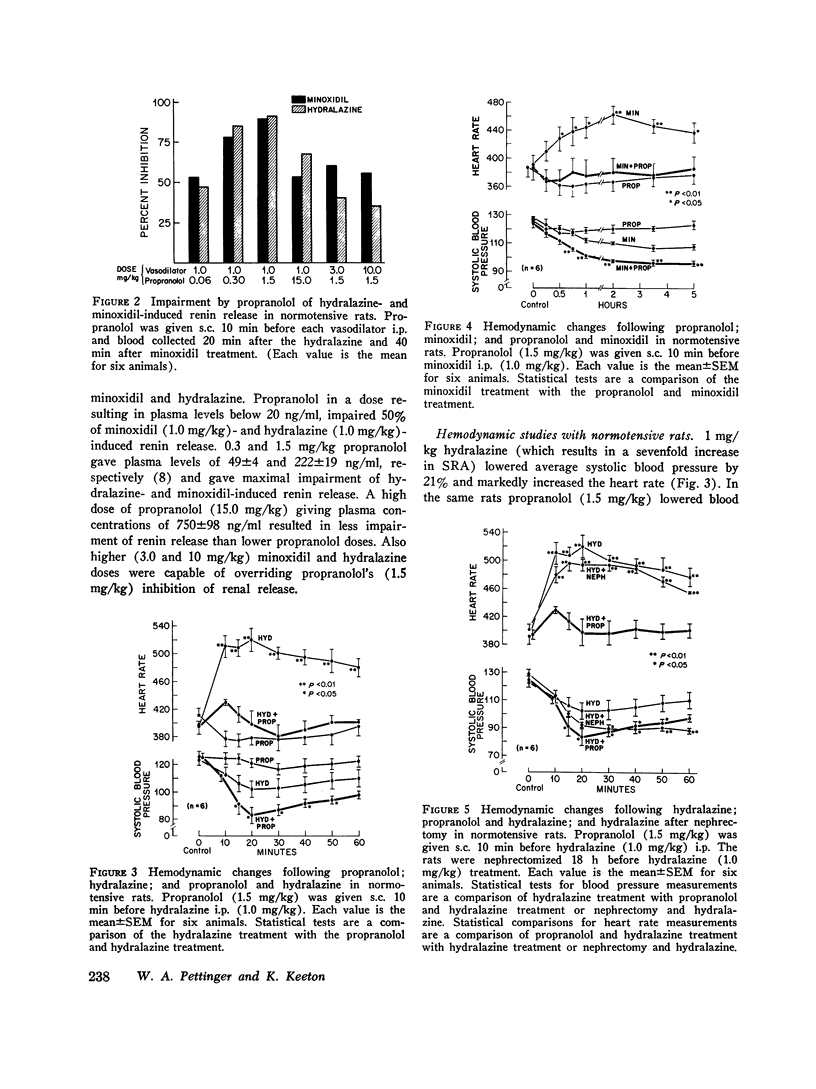
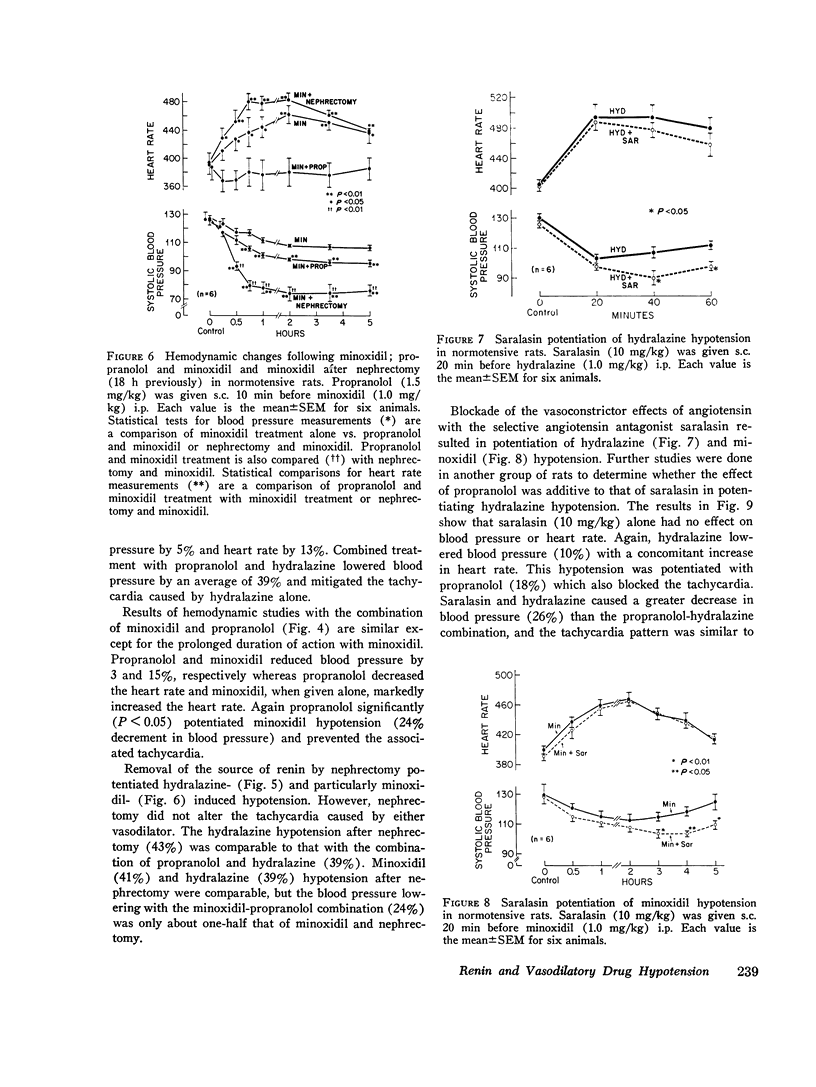
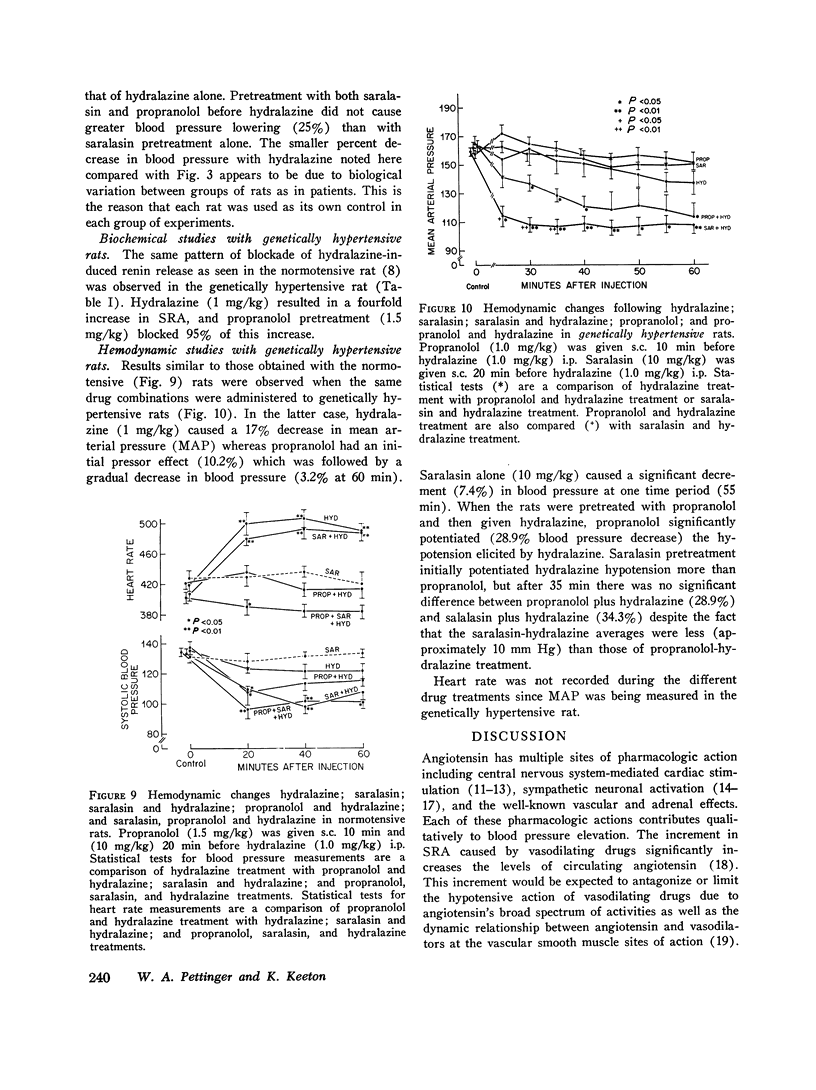
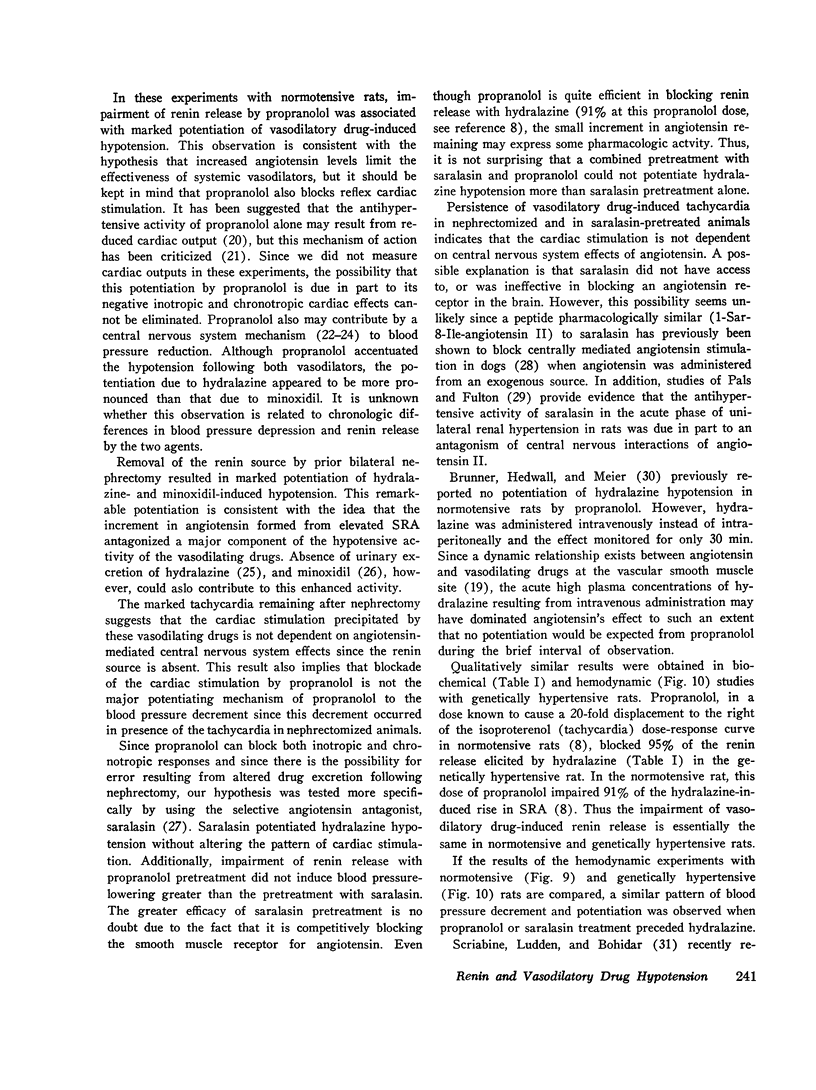
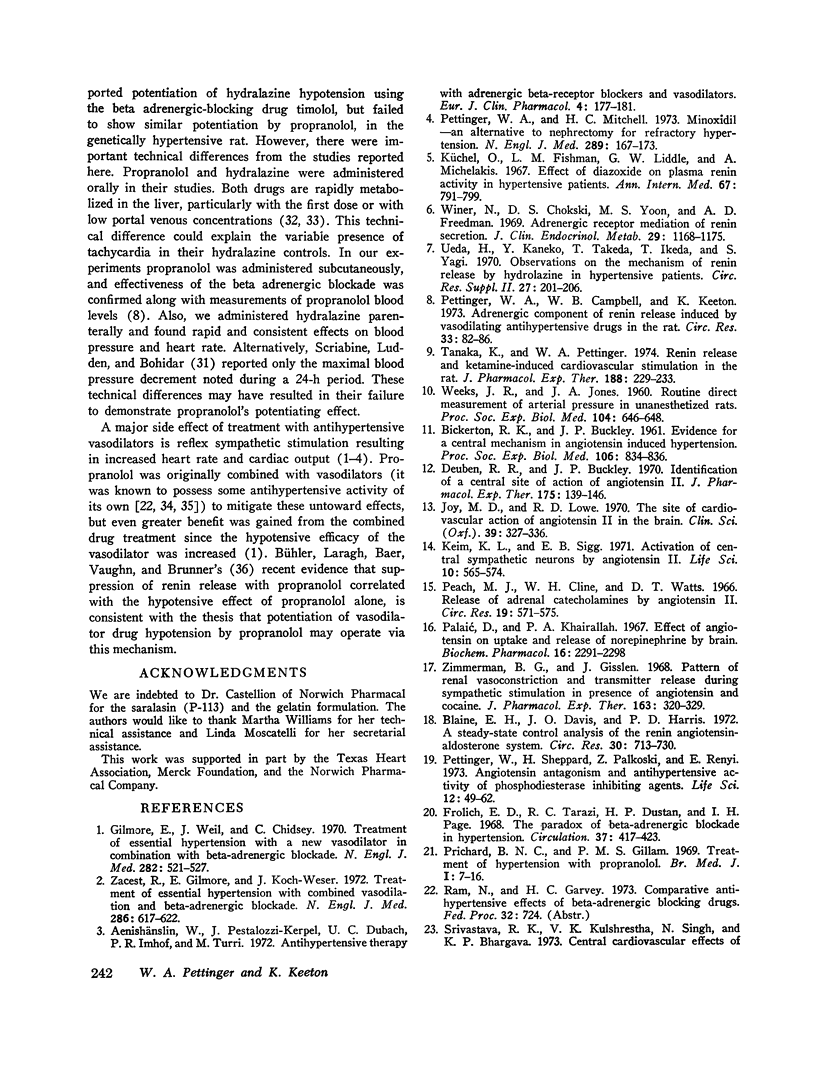
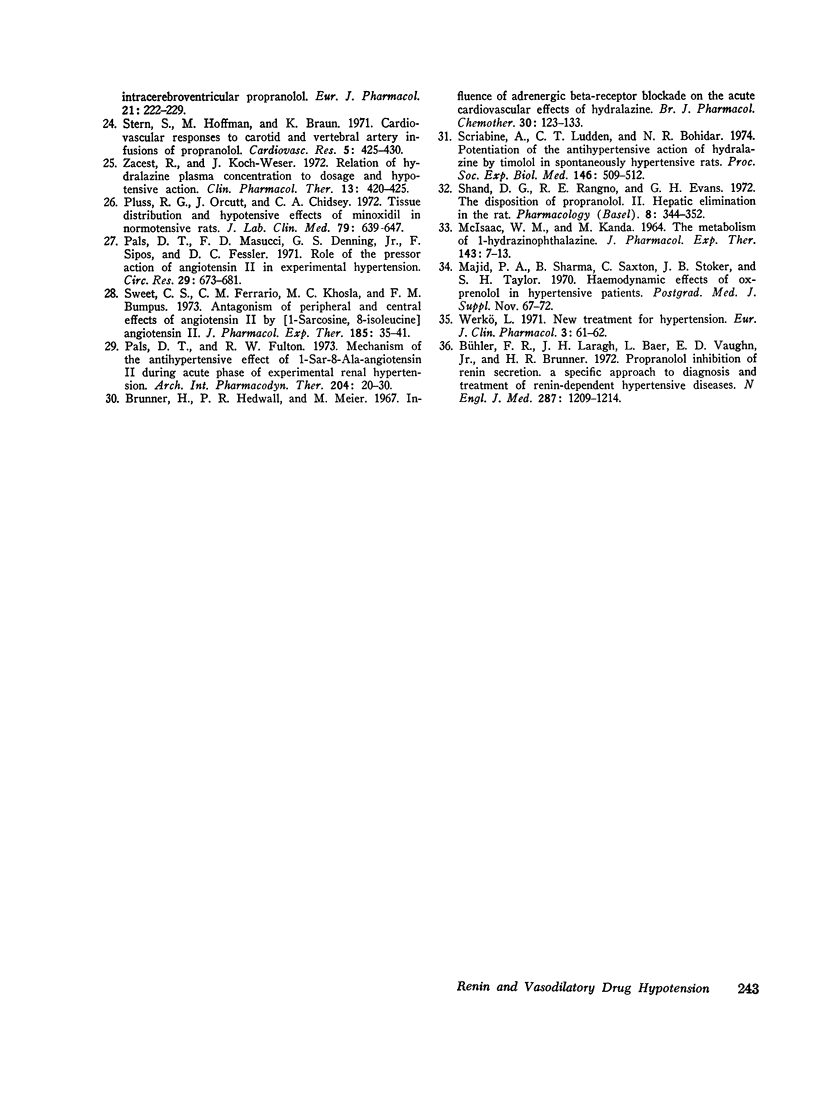
Selected References
These references are in PubMed. This may not be the complete list of references from this article.
- Aenishänslin W., Pestalozzi-Kerpel J., Dubach U. C., Imhof P. R., Turri M. Antihypertensive therapy with adrenergic beta-receptor blockers and vasodilators. Eur J Clin Pharmacol. 1972 Jun;4(3):177–181. doi: 10.1007/BF00561142. [DOI] [PubMed] [Google Scholar]
- Blaine E. H., Davis J. O., Harris P. D. A steady-state control analysis of the renin-angiotensin-aldosterone system. Circ Res. 1972 Jun;30(6):713–730. doi: 10.1161/01.res.30.6.713. [DOI] [PubMed] [Google Scholar]
- Brunner H., Hedwall P. R., Meier M. Influence of adrenergic beta-receptor blockade on the acute cardiovascular effects of hydralazine. Br J Pharmacol Chemother. 1967 May;30(1):123–133. doi: 10.1111/j.1476-5381.1967.tb02118.x. [DOI] [PMC free article] [PubMed] [Google Scholar]
- Bühler F. R., Laragh J. H., Baer L., Vaughan E. D., Jr, Brunner H. R. Propranolol inhibition of renin secretion. A specific approach to diagnosis and treatment of renin-dependent hypertensive diseases. N Engl J Med. 1972 Dec 14;287(24):1209–1214. doi: 10.1056/NEJM197212142872401. [DOI] [PubMed] [Google Scholar]
- Deuben R. R., Buckley J. P. Identification of a central site of action of angiotensin II. J Pharmacol Exp Ther. 1970 Oct;175(1):139–146. [PubMed] [Google Scholar]
- Frohlich E. D., Tarazi R. C., Dustan H. P., Page I. H. The paradox of beta-adrenergic blockade in hypertension. Circulation. 1968 Mar;37(3):417–423. doi: 10.1161/01.cir.37.3.417. [DOI] [PubMed] [Google Scholar]
- Gilmore E., Weil J., Chidsey C. Treatment of essential hypertension with a new vasodilator in combination with beta-adrenergic blockade. N Engl J Med. 1970 Mar 5;282(10):521–527. doi: 10.1056/NEJM197003052821001. [DOI] [PubMed] [Google Scholar]
- Joy M. D., Lowe R. D. The site of cardiovascular action of angiotensin II in the brain. Clin Sci. 1970 Aug;39(2):327–336. doi: 10.1042/cs0390327. [DOI] [PubMed] [Google Scholar]
- Keim K. L., Sigg E. B. Activation of central sympathetic neurons by angiotensin II. Life Sci I. 1971 May 15;10(10):565–574. doi: 10.1016/0024-3205(71)90042-7. [DOI] [PubMed] [Google Scholar]
- Küchel O., Fishman L. M., Liddle G. W., Michelakis A. Effect of diazoxide on plasma renin activity in hypertensive patients. Ann Intern Med. 1967 Oct;67(4):791–799. doi: 10.7326/0003-4819-67-4-791. [DOI] [PubMed] [Google Scholar]
- MCISAAC W. M., KANDA M. THE METABOLISM OF 1-HYDRAZINOPHTHALAZINE. J Pharmacol Exp Ther. 1964 Jan;143:7–13. [PubMed] [Google Scholar]
- Majid P. A., Sharma B., Saxton C., Stoker J. B., Taylor S. H. Haemodynamic effects of oxprenolol in hypertensive patients. Postgrad Med J. 1970 Nov;(Suppl):67–72. [PubMed] [Google Scholar]
- Palaić D., Khairallah P. A. Effect of angiotensin on uptake and release of norepinephrine by brain. Biochem Pharmacol. 1967 Dec;16(12):2291–2298. doi: 10.1016/0006-2952(67)90216-x. [DOI] [PubMed] [Google Scholar]
- Pals D. T., Fulton R. W. Mechanism of the antihypertensive effect of 1-Sar-8-Ala-angiotensin II during the acute phase of experimental renal hypertension. Arch Int Pharmacodyn Ther. 1973 Jul;204(1):20–30. [PubMed] [Google Scholar]
- Pals D. T., Masucci F. D., Denning G. S., Jr, Sipos F., Fessler D. C. Role of the pressor action of angiotensin II in experimental hypertension. Circ Res. 1971 Dec;29(6):673–681. doi: 10.1161/01.res.29.6.673. [DOI] [PubMed] [Google Scholar]
- Peach M. J., Cline W. H., Jr, Watts D. T. Release of adrenal catecholamines by angiotensin. II. Circ Res. 1966 Sep;19(3):571–575. doi: 10.1161/01.res.19.3.571. [DOI] [PubMed] [Google Scholar]
- Pettinger W. A., Campbell W. B., Keeton K. Adrenergic component of renin release induced by vasodilating antihypertensive drugs in the rat. Circ Res. 1973 Jul;33(1):82–86. doi: 10.1161/01.res.33.1.82. [DOI] [PubMed] [Google Scholar]
- Pettinger W. A., Mitchell H. C. Minoxidil--an alternative to nephrectomy for refractory hypertension. N Engl J Med. 1973 Jul 26;289(4):167–171. doi: 10.1056/NEJM197307262890401. [DOI] [PubMed] [Google Scholar]
- Pettinger W., Sheppard H., Palkoski Z., Renyi E. Angiotensin antagonism and antihypertensive activity of phosphodiesterase inhibiting agents. Life Sci I. 1973 Jan 15;12(2):49–62. doi: 10.1016/0024-3205(73)90061-1. [DOI] [PubMed] [Google Scholar]
- Pluss R. G., Orcutt J., Chidsey C. A. Tissue distribution and hypotensive effects of minoxidil in normotensive rats. J Lab Clin Med. 1972 Apr;79(4):639–647. [PubMed] [Google Scholar]
- Prichard B. N., Gillam P. M. Treatment of hypertension with propranolol. Br Med J. 1969 Jan 4;1(5635):7–16. doi: 10.1136/bmj.1.5635.7. [DOI] [PMC free article] [PubMed] [Google Scholar]
- Scriabine A., Ludden C. T., Bohidar N. R. Potentiation of the antihypertensive action of hydralazine by timolol in spontaneously hypertensive rats. Proc Soc Exp Biol Med. 1974 Jun;146(2):509–512. doi: 10.3181/00379727-146-38136. [DOI] [PubMed] [Google Scholar]
- Shand D. G., Rangno R. E., Evans G. H. The disposition of propranolol. II. Hepatic elimination in the rat. Pharmacology. 1972;8(4):344–352. doi: 10.1159/000136352. [DOI] [PubMed] [Google Scholar]
- Srivastava R. K., Kulshrestha V. K., Singh N., Bhargava K. P. Central cardiovascular effects of intracerebroventricular propranolol. Eur J Pharmacol. 1973 Feb;21(2):222–229. doi: 10.1016/0014-2999(73)90230-6. [DOI] [PubMed] [Google Scholar]
- Stern S., Hoffman M., Braun K. Cardiovascular responses to carotid and vertebral artery infusions of propranolol. Cardiovasc Res. 1971 Oct;5(4):425–430. doi: 10.1093/cvr/5.4.425. [DOI] [PubMed] [Google Scholar]
- Sweet C. S., Ferrario C. M., Khosla M. C., Bumpus F. M. Antagonism of peripheral and central effects of angiotensin II by (1-sarcosine, 8-isoleucine)angiotensin II. J Pharmacol Exp Ther. 1973 Apr;185(1):35–41. [PubMed] [Google Scholar]
- Tanaka K., Pettinger W. A. Renin release and ketamine-induced cardiovascular stimulation in the rat. J Pharmacol Exp Ther. 1974 Jan;188(1):229–233. [PubMed] [Google Scholar]
- Ueda H., Kaneko Y., Takeda T., Ikeda T., Yagi S. Observation on the mechanism of renin release by hydralazine in hypertensive patients. Circ Res. 1970 Oct;27(Suppl):201–206. [PubMed] [Google Scholar]
- WEEKS J. R., JONES J. A. Routine direct measurement of arterial pressure in unanesthetized rats. Proc Soc Exp Biol Med. 1960 Aug-Sep;104:646–648. doi: 10.3181/00379727-104-25937. [DOI] [PubMed] [Google Scholar]
- Winer N., Chokshi D. S., Yoon M. S., Freedman A. D. Adrenergic receptor mediation of renin secretion. J Clin Endocrinol Metab. 1969 Sep;29(9):1168–1175. doi: 10.1210/jcem-29-9-1168. [DOI] [PubMed] [Google Scholar]
- Zacest R., Gilmore E., Koch-Weser J. Treatment of essential hypertension with combined vasodilation and beta-adrenergic blockade. N Engl J Med. 1972 Mar 23;286(12):617–622. doi: 10.1056/NEJM197203232861201. [DOI] [PubMed] [Google Scholar]
- Zacest R., Koch-Weser J. Relation of hydralazine plasma concentration to dosage and hypotensive action. Clin Pharmacol Ther. 1972 May-Jun;13(3):420–425. doi: 10.1002/cpt1972133420. [DOI] [PubMed] [Google Scholar]
- Zimmerman B. G., Gisslen J. Pattern of renal vasoconstriction and transmitter release during sympathetic stimulation in presence of angiotensin and cocaine. J Pharmacol Exp Ther. 1968 Oct;163(2):320–329. [PubMed] [Google Scholar]


